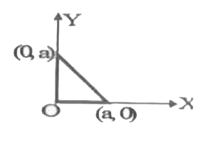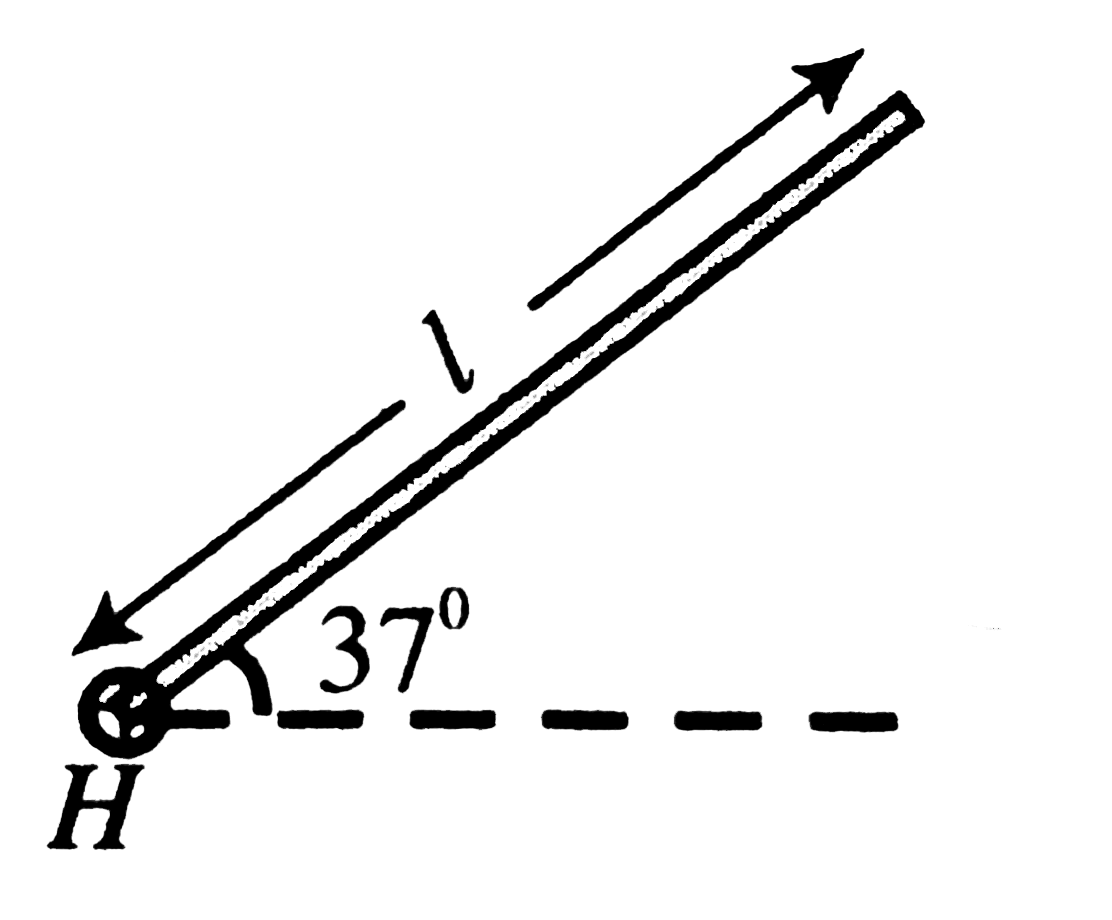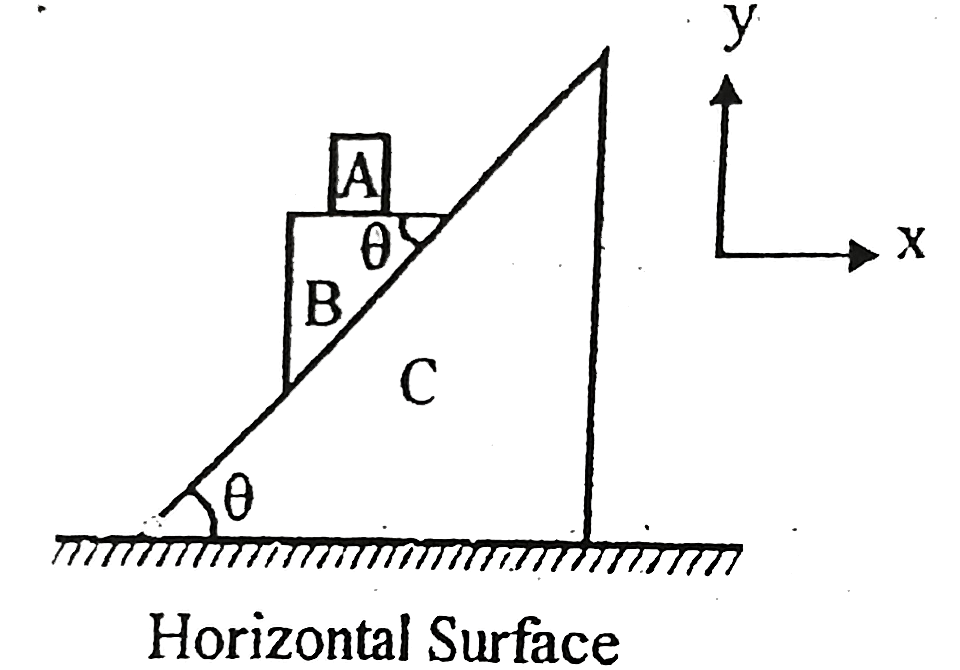A rod and a block are of same mass. Initially rod is in horizontal position. What will be acceleration of tip of the rod just after the system is released from this position shown in figure.

zero
3g4
3g8
3g2
The correct Answer is:B
Step by step video & image solution for A rod and a block are of same mass. Initially rod is in horizontal position. What will be acceleration of tip of the rod just after the system is released from this position shown in figure. by Physics experts to help you in doubts & scoring excellent marks in Class 12 exams.
Updated on:21/07/2023Topper's Solved these Questions
- 10 ROTATIONALBOOK - MOTIONCHAPTER - 10 ROTATIONALEXERCISE - Exercise - 2 (Level -I)
51 Videos
- 10 ROTATIONALBOOK - MOTIONCHAPTER - 10 ROTATIONALEXERCISE - Exercise - 2 (Level - II)
25 Videos
- 10 ROTATIONALBOOK - MOTIONCHAPTER - 10 ROTATIONALEXERCISE - Example 31
1 Videos
- ALTERNATING CURRENTBOOK - MOTIONCHAPTER - ALTERNATING CURRENTEXERCISE - EXERCISE - 4 (LEVEL - II)
14 Videos
Similar Questions
(a) In the system shown in figure 1, the uniform rod of length L and mass m is free to rotate in vertical plane about point O. The string an pulley are mass less. The block has mass equal to that of the rod. Find the acceleration of the block immediately after the system is released with rod in horizontal position.
(b) System shown in figure 2 is similar to that in figure 1 apart from the fact that rod is mass less and a block of mass m is attached to the centre of the rod with the help of a thread. Find the acceleration of both the blocks immediately after the system is released with rod in horizontal position.

View SolutionA uniform rod of mass m and length l can rotate in a vertical plane about a smooth horizontal axis point H. a. Find angular acceleration α of the rod. just after it is released from initial horizontal position from rest'? b. Calculate the acceleration (tangential and radial) , point A at this moment.

View Solution
Knowledge Check
A particle of mass m is attached to an end of a uniform rod of mass M = 2m and length l1 which is suspended through its mid point by an inextensible string as shown initially the rod is in horizontal position and at rest. The system is released from this position Just after the release
 AThe angular acceleration of the system is 6g5lBThe angular acceleration of the system is 2g5lCThe Tension in the string is 125mgDThe Tension in the string is 25 mg
AThe angular acceleration of the system is 6g5lBThe angular acceleration of the system is 2g5lCThe Tension in the string is 125mgDThe Tension in the string is 25 mgA simple pendulum A and a homogeneous rod B hinged at its enda are released from horizontal position as shown in figure.
 AThe times period of swing of simple pendulum is greater than that of rod If L=lBThe times period of swing of simple pendulum is equal to that of rod If L=lCThe times period of swing of simple pendulum is greater than that of rod If L=2l3DThe times period of swing of swing of simle pendulum is equal to that of rod if L=2l3
AThe times period of swing of simple pendulum is greater than that of rod If L=lBThe times period of swing of simple pendulum is equal to that of rod If L=lCThe times period of swing of simple pendulum is greater than that of rod If L=2l3DThe times period of swing of swing of simle pendulum is equal to that of rod if L=2l3Three rods of the same mass are placed as shown in the figure. What will be the co-ordinates of the cneter of mass of the system ?
 A(a/2,a/2)B(a/√2,a/√2)C(√2a3,√2a3)D(a3,a3)
A(a/2,a/2)B(a/√2,a/√2)C(√2a3,√2a3)D(a3,a3)
A uniform rod of mass m and length l can rotate in vertical plane about a smooth horizontal axis hinged at point H. Find angular acceleration α of the rod just after it is released from initial position making an angle of 37∘ with horizontal from rest?

View SolutionA rod of mass M is hanged at one end at the other end, a block of same mass M is attached rigidly. The rod is held at in horizontal position and is suddenly released. The angular acceleration of the system about O is xg/(8l) then the value of X.
View SolutionIn the figure shown all the surface are smooth. All the blocks A, B and C are movable, x-axis is horizontal and y-axis verticle as shown. Just after the system is released from the position as shown.

View SolutionA uniform rod of mass 20 Kg and length 1.6 m is piovted at its end and swings freely in the vertical plane. Angular acceleration of the rod just after the rod is relased from rest in the horizontal position is

View SolutionUniform rod Ab is hinged at the end A in the figure. The other end of the rod is connected toa block through a massless string as shown. The pulley is smooth and massless. Masses of the block and the rod are same and are equal to 'm'. Acceleration due to gravity is g. The tension in the thread and angular acceleration of the rod just after releases of block from this position are

View Solution
